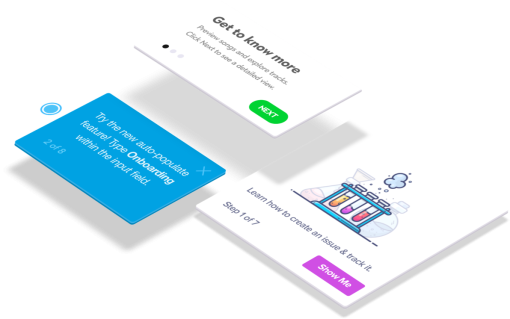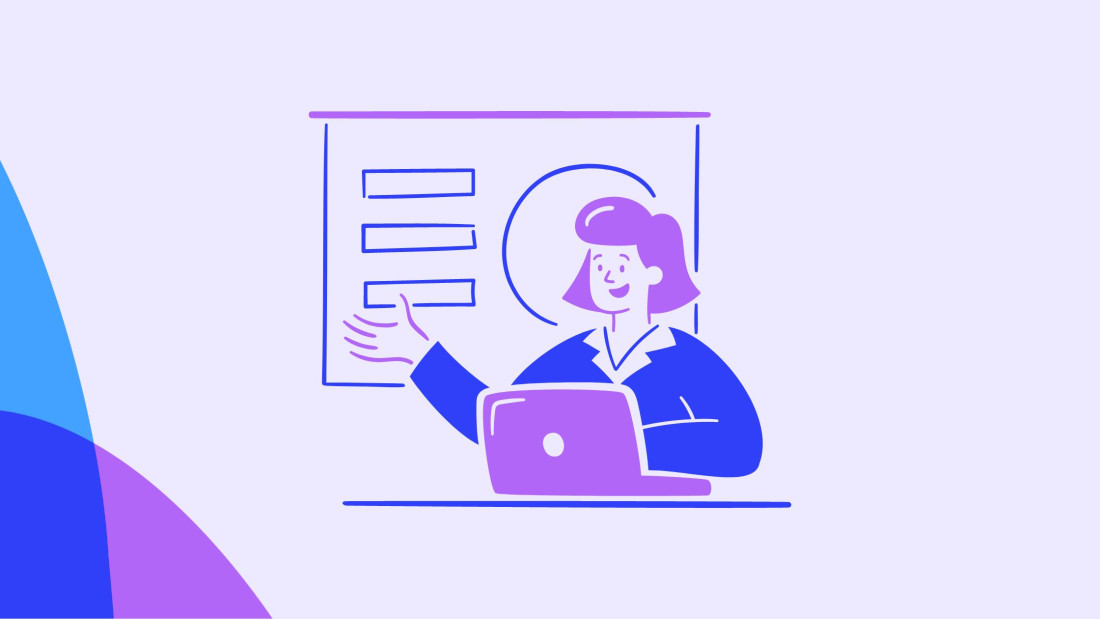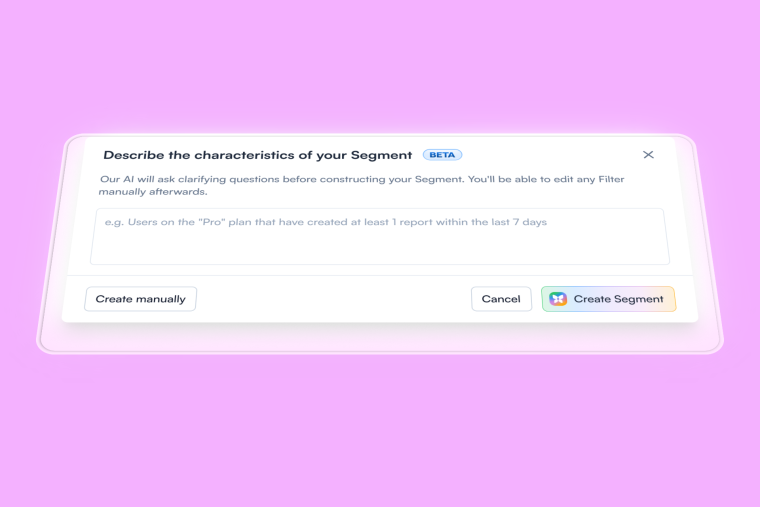Depending on your product's complexity, you might want to apply high-touch or low-touch techniques, also known as human-touch and tech-touch, as a way to drive customer satisfaction and retention.
In this article, we’ll run you through the ins and outs of both methods, their pros and cons, real-life examples, and the ways you can implement each strategy into your customer success models.
The high-touch model often requires great human interaction, whereas low-touch requires little to none
The high-touch model is most commonly used for SaaS products with a higher annual recurring revenue (ARR), those requiring greater data input, or tools with a steeper learning curve
You can implement the high-touch model using customer segmentation, regular sync calls, one-to-one product guidance, and more
The low-touch model is commonly used for SaaS solutions that don’t need to be integrated with other tools or don’t require data input to get started
You can implement the low-touch model by automating product tours and guides, creating and updating your help docs and videos, building out an easy-to-navigate knowledge base, and more
High-touch vs. Low-touch: What is the difference?
A high-touch onboarding and customer success model is also referred to as a human-touch model. It requires one-to-one interaction from a Customer Success rep and frequent sync calls with the customer. It tends to be perceived as a more personal, intimate approach to customer retention than a low-touch support model.
A low-touch onboarding and customer success model is also referred to as a tech-touch model. It requires low to no one-to-one time and promotes a self-serve product experience via various useful resources.
That’s the basics covered, now let’s level it up.
How does the high-touch model work?
The human-touch onboarding model relies on a Customer Success Manager (CSM), or in some cases, an entire customer success team—depending on the size of the account.
In the example below, the team at ChartMogul takes a proactive approach to help users navigate their new tool with customized onboarding material delivered (typically) via one-to-one communications.

(Source)
In this example, you can see that, despite high-touch promoting human interaction, it can still be automated until a human needs to step in.
High-touch onboarding is a go-to for SaaS companies that need to configure their tool to the clients’ tools, collect specific data for their product to be effective, or when there are multiple set-up processes to the product that needs to be delivered over time. It’s a good fit for custom solutions.
This type of customer engagement model will see a dedicated customer success manager guide new customers and give personalized support through instances like live training, individual or team onboarding, new feature introductions, and more.
For the SaaS teams that are using both high-touch and low-touch models in their user onboarding strategies, the high-touch model is typically reserved for high-value customers or even at-risk customers since it’s often tough to scale.
Let’s take a look at the most prominent pros and cons.
High-touch model pros
It offers an intimate, highly personalized onboarding experience
It can help increase product adoption and feature adoption rates
It makes it easier to gather qualitative customer feedback
It helps you understand customer expectations more quickly
High-touch model cons
It can be tricky to scale as it would require new hires for your CS team
It promotes a sales-led strategy which could conflict with your PLG motion
It may not be what customers really want—that’s why early feedback is crucial
It could be difficult to align your team with different time zone schedules
It could be tough to holistically track customer progress with low data inputs
How to set customers up for success with the high-touch support
As customer success managers, you can apply the following tactics to ensure a solid high-touch support strategy for your customers.
Get granular with customer segmentation
First up, segment your customers so that you’ll be able to provide them with the most personalized onboarding flows possible.
This goes far beyond which payment plan they're on. You can segment your customers based on their pain points, team size, roles, budgets, and so much more.
You can start the segmentation from the moment users sign up for your product. Here’s an example of how Bonsai does this.

(Source)
Find a segmentation plan that will inform your CS team of the type of onboarding different profiles or user personas need, and then you can optimize your onboarding material per cohort, making this one-to-one customer support method that much more scalable.
Book regular sync calls
Regular customer calls, especially in those critical first few weeks and months for users, are crucial for reducing churn. These calls will help you not only guide users through your product but will also help your customer success reps keep their fingers on the pulse of your users’ product sentiment.
After the first few months are aside, regular calls can be monthly or even quarterly calls. These types of calls can help you track things like:
You may be thinking, “but we already send out surveys to gauge this”. And that’s great! The CSAT, NPS, CES, and other types of product surveys work well for low-touch onboarding methods. However, don’t be afraid to move them to verbal interviews if you decide to run with a high-touch strategy.
The perks of these surveys being transformed into interviews mean that customers are not static in their answers. The interviewer can gauge reactions and sentiment better, and take a deep dive into a particular topic if they feel they need to.
Continuous user feedback collection throughout the customer lifecycle is critical in ensuring a long and successful customer lifetime value (LTV). Plus, regular customer satisfaction check-ins, will not only ensure satisfied customers but will also help you raise the alarm on those customers that are slipping on the NPS scale.
Host one-on-one product training
In-person product training is absolutely essential in high-touch customer onboarding. It gives you a true feeling that users are valued (which they are!) and allows your reps to amend the onboarding as they see fit, tailoring out an onboarding plan that’s fluent and fits the users changing or perhaps misunderstood customer needs.
Your users need to know where and when they can reach you. Manage expectations at the start of your working relationship to ensure they remain happy, and you remain accessible.
Here’s an example from our Playground, a sandbox environment where our new users can create different in-product experiences, whether with Tours, Tooltips, Launchers, or Microsurveys, and explore on their own. But, we also offer an in-app help menu where users can quickly find the answers they need or get in touch with our team for more information.
💡 Want to try Chameleon Playground yourself? Sign up and start exploring, it’s free.
The bottom line: Set up clear communication channels and working hours that you’re reachable at. What’s more, give your users options to meet them on a channel that suits them best. Some communication channels to consider are email, in-product chat, or Slack. When you give users options, they don’t feel restricted to using a type of communication that doesn’t work for them or their internal communication culture.
Fabulous, that’s high-touch covered, let’s flip the coin and take a look at low-touch.
How does the low-touch model work?
Also called tech-touch, the low-touch model provides little to no direct human contact in order to onboard and retain your users. This self-serve model uses a mix of help documents, useful resources, and a knowledge base to enable users to learn at their own pace.
Here’s an example from Slack, a SaaS product with one of the best self-serve support out there.

(Source)
When you educate users via low-touch engagement models, your operations are often more scalable. However, low touch doesn’t mean low effort. For what you’ll save on human resources in customer support and success, you’ll need to add to building out the content that these users need.
A lot of this material will need a bulk investment upfront, and tweaks as you grow, rather than constant input. It requires in-depth segmentation to be effective.
This model of low touch customer service is great for high-volume of customers that require little data input for the tool to be successful. It’s also used for standalone SaaS, meaning SaaS that doesn’t need to integrate with any other tool to be able to prove useful.
Product-led teams that opt for automated support for new users will see a mix of pros and cons, so let’s take a closer look at these.
Low-touch model pros
It offers self-serve guidance so users don’t feel dependent on someone else
It’s easier to scale customer education content than human-touch support
It can have a lower full-time equivalent (FTE) cost
It can be easily supported by in-product experiences with no need for coding
Low-touch model cons
It could take time to set it up, but once you implement it, the updates get quicker
There’s a risk of feeling impersonal for users who'd prefer talking to your team
It can be tough to gauge customer sentiment through feedback data processing
There’s a potential higher risk of churn if you don't set it up the right way
How to set customers up for success with the low-touch support
If you’re serious about setting up low-touch support for your users, here are a few tactics you’ll need to get going.
Prepare useful support content
Low-touch support is only as good as the educational product help content you create. You’ll need a powerhouse of a team, to conduct research and build out content that serves FAQs, customer onboarding, new feature walkthroughs, and more.
Next, you’ll need to be delivering this information in a way that suits each type of user in your product. This could be with contextual in-app tutorials and in-product help menus, but it could also include video guides, training courses, help articles, and email flows that deliver onboarding materials in bite-sized chunks.
Here’s an example from Codility that offers various options from their Help Center.
(Source)
The bottom line: Find opportunities to deliver product information to your users in a way that works best for them—at the right time, and within the right context.
Automate product tours and guides
For self-serve onboarding to truly be successful, it needs to be automated. There are various ways you can automate onboarding tours and guides.

Setting triggers is a way to automate tours
A few tactics to consider:
Timed or triggered email flows
Triggered in-app notifications, product tours, and help menus
Content delivered via chat based on what your users are searching for
Automate as many flows as you can and minimize human input in delivering self-serve content.

Scale self-serve success with data and best practices from 300 million Chameleon Experiences
The 2022 edition of Chameleon's Benchmark Report is here. Get the in-depth free report sent straight to your inbox.
Keep your help docs up-to-date
There is nothing more frustrating than a dated help doc. Delivering your customers out-of-date and irrelevant information will disgruntle them fast and encourage churn. Stay on top of all of your documents and ensure they accurately reflect any in-app changes.
This doesn’t just mean keeping your docs and videos updated, but any product interface screenshots you use in walkthroughs should reflect any design changes so a user knows exactly where they’re looking.
Moved a button? Time to update that content! Changed a color palette? Update the help docs and videos! Got a new feature? Update old content to reflect how this new feature comes into play from every angle.
In addition, show users how recently changes were made to let them know that what they're looking at is the most up to date information.

Build an easy-to-navigate knowledge base
Whether you call it a knowledge base, help center, resource hub, or product training center, make sure it’s comprehensive enough, well-structured, and that relevant guidance is easy for users to find.
Here’s an example of what Chameleon’s Help Center looks like. We keep it categorized for easier navigation.
There are a few UX research methods you can use to help you build out a naming strategy and knowledge base map that makes sense for your users. Bring them to the content they’re looking for in their first attempt. Some of the research strategies you can use are card sorting, 5-second tests, preference testing, tree testing, and wireframe testing.
It’s also a good idea to run contextual product surveys on various pages of your resource hub asking the user if they found what they were looking for. If they didn’t, then give them room to let you know and reconsider your knowledge base structure.
Create continuous feedback loops
As your CS team won’t have their finger on the pulse so much with in-person comms, it’s important to run continuous feedback opportunities to ensure you’re aware of what you need to act on, what needs a tweak, where your retention opportunities or even upsells lay, and more.
In-app feedback surveys are a great way for you to meet your users where they are and get a better understanding of their efforts and expectations throughout their journey with your product.
For this purpose, you can use Microsurveys to quickly tailor them to your needs. Here’s a mock-up example of what a survey configuration with its response rates overview could look like when built with Chameleon.

Offer self-serve support options
Just because your onboarding is low-touch, doesn’t mean you need to be out of touch. Offer self-serve support options so that users can find the low-touch content that fits their needs in the way that suits how they work.

An example of a handy self-serve help menu
It’s also okay to use front-line support to help you provide this content if your chatbot can’t provide the solution. This front-line support doesn’t need to know the user’s specific account details but can be on hand to answer questions or direct users in the right direction with content you’ve already created.
Remember, you can still be customer-centric with low-touch support.
A wrap-up on high-touch vs. low-touch models
There you have it, everything you need to know on high-touch vs. low-touch onboarding approaches and customer success methods to help you pick the model that’s the best fit for your product.
There’s no right or wrong answer to these two models. Each one has its pros and cons and your process of picking one or the other should depend largely on your product's complexity, customer needs, and how you want to cater to those needs.
Spend time researching which model is better for where your business is currently at, and don’t be afraid of making the switch from one model to the other. It’ll take time, but once you’ve locked down the strategy that works for your SaaS, you’ll be better off for it.

Build in-app guides to retain users
Chameleon makes it easy for product teams to create product tours, tooltips, onboarding checklists, and in-app surveys without code.






